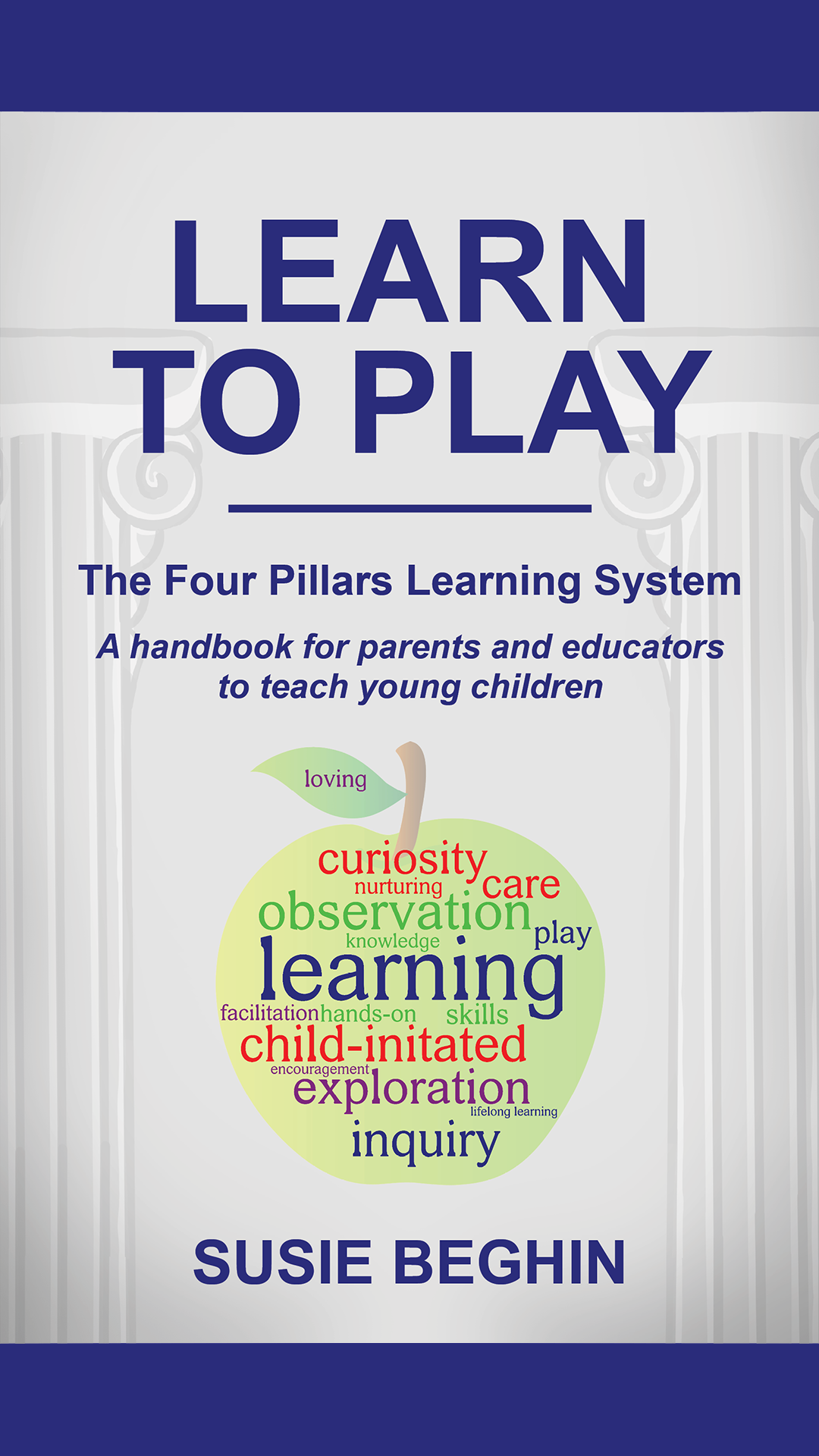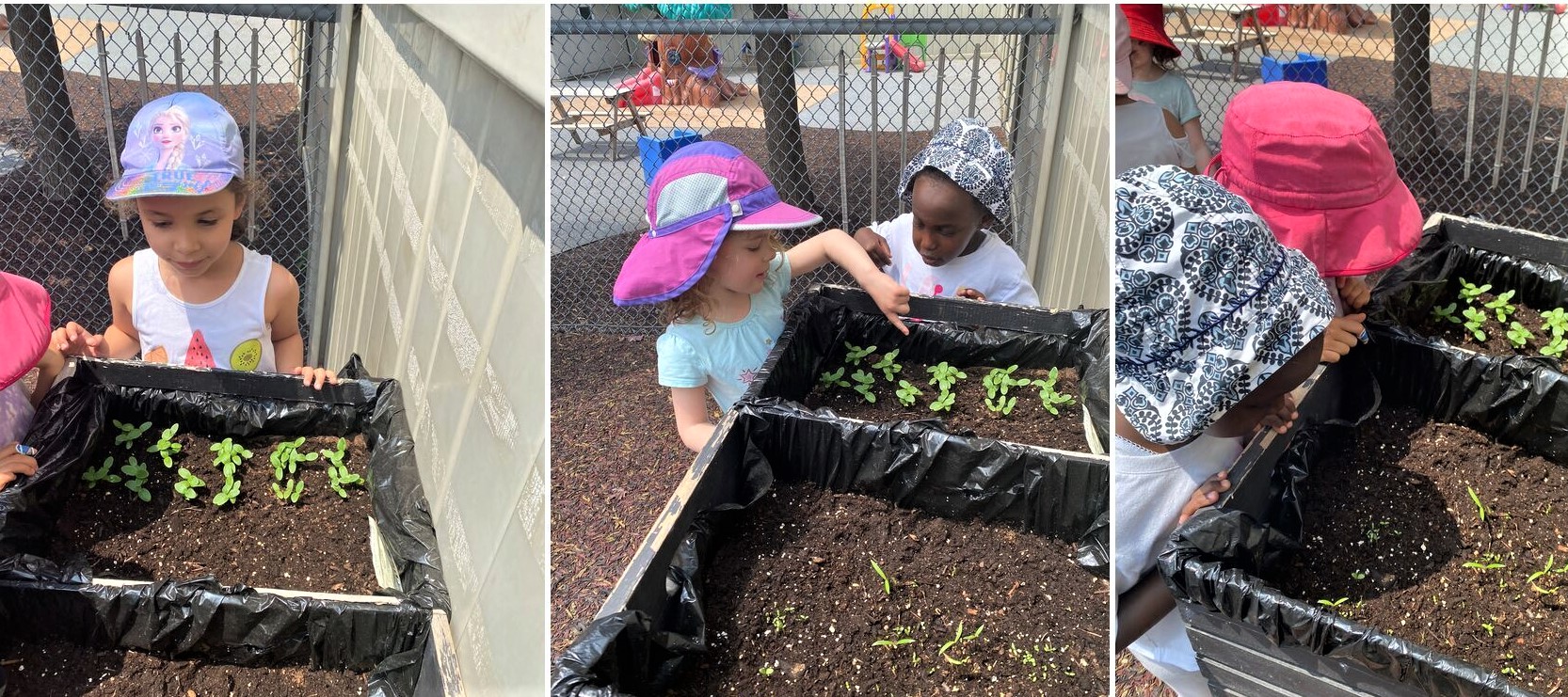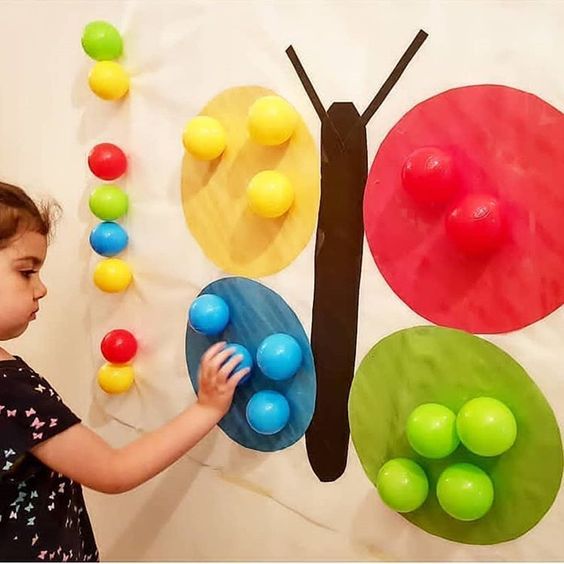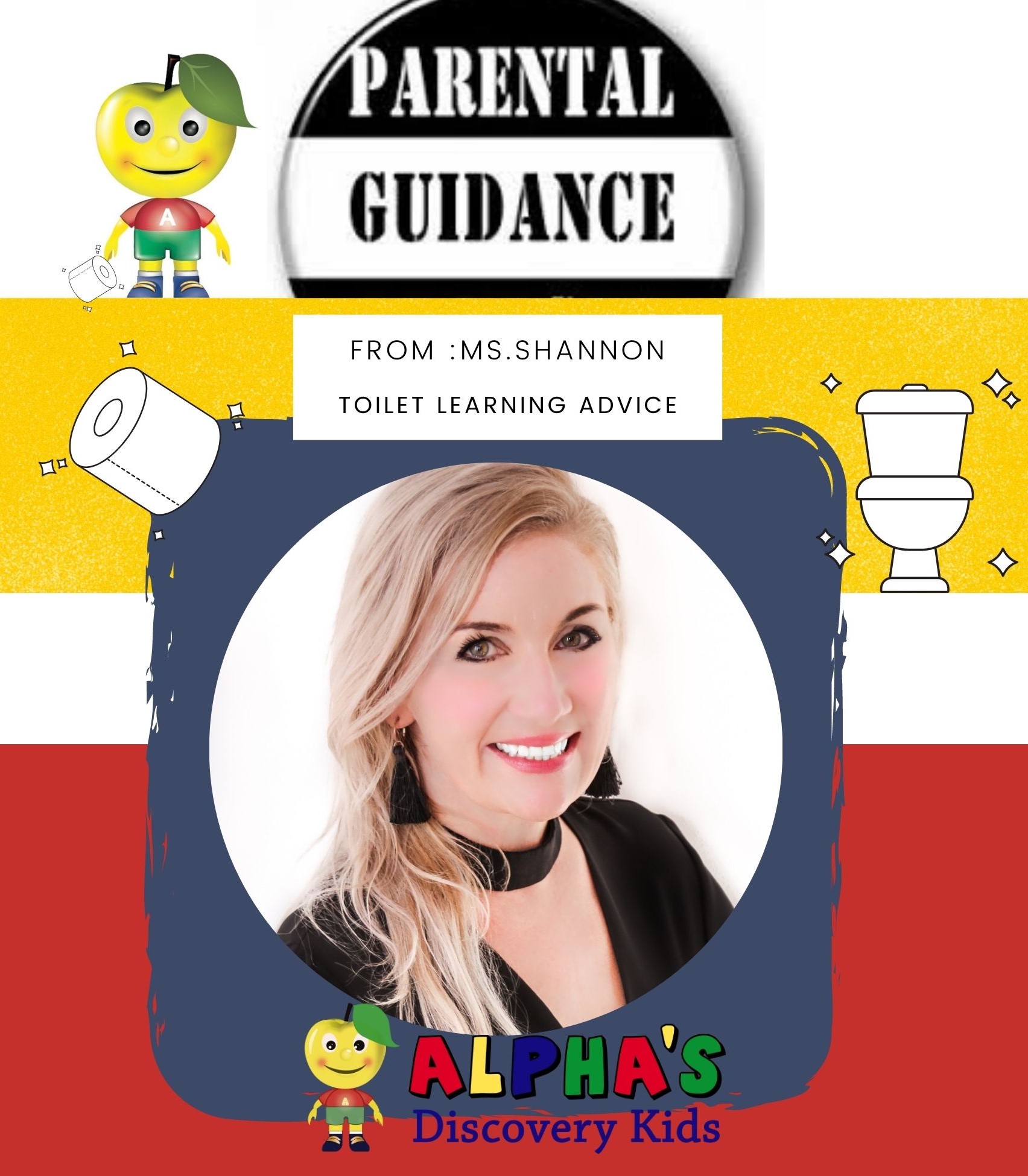Learn To Play: The Four Pillars Learning System
Learn To Play: The Four Pillars Learning System
Book Release
My mission is to give children the best start in life. – Susie Beghin
Did you know that children between the ages of 0 and 6 years old learn more in those early years than they ever will again in their lives?
That’s why it’s so important to teach them well during those early years! Those early years will have an impact on them like no other time of their lives.
Our founder, Susie Beghin, just released a new book called “Learn to Play: The Four Pillars Learning System“. In the book, she talks about the important role that parents play in the education of their young children during this critical period of their lives.
“I wrote this book during the pandemic because I saw parents struggling with educating their kids. I want parents to know their crucial role in the education of their children – and I’m here to help them. I want to give parents and educators the tools they need to educate those kiddos using a proven system! In the book, I share the Four Pillars learning system we use in the daycare environment and how parents can use those same strategies at home. Essentially, I want to help parents become the educators and play partners that their children need them to be!”
Susie will be signing her books at her official book launch in Mississauga on September 25th from 2-4 pm. There are limited tickets (only 100 tickets available) and the event is free! Refreshments will be provided. Books are available for purchase at the event at a discount. Click here to book your tickets to the event on Eventbrite.
The book is now available in Canada on Amazon if you want to purchase an advance copy.
U.S. or International can purchase here.
10 Years – A Reflection
10 Years – A Reflection
By Susie Beghin
As we approach the 10-year anniversary of Alpha’s Discovery Kids Preschool and Daycare, this is a great opportunity to reflect on the past 10 years and recognize those who have made it all possible.
When I first started the business in 2004, which was originally called Alpha’s Discovery Club, it was an indoor playground that provided educational entertainment and extra-curricular programs for children up to 10 years old. The business evolved over time, and it became clear to me that my dream was to open an education-focused child care facility for young children.
I realized that dream in 2012 – 10 years ago – with the first location in Mississauga called Alpha’s Preschool Academy and Child Care Centre. Over the years, the name changed slightly to what is now known as Alpha’s Discovery Kids Preschool and Daycare.
When we first opened our doors in September 2012, we had 8 children enrolled. Over the years, we have grown to our full capacity of 69 kids and expanded to open other locations in Oakville and Mississauga.
It wasn’t easy to leave my previous “corporate” job and start a new business. But I felt almost compelled to do it and haven’t looked back! It was the best decision of my life. I would say that my inspiration for starting Alpha’s was my son Gabriel, born in 2002. It was by being his mom that I learned that my true passion in life was to work with kids. In 2007, my son John-Michael was born, and he inspired me to pursue the dream of owning my own daycare – which came to reality a few years later in 2012.
We have had some very special educators that have been with us throughout these 10 years that have made a huge impact on our organization. Amanda, Roda, Meg are educators who were with me from the very beginning and are still educating children at Alpha’s. I am so thankful to all our educators – past and present! They have helped us create a unique curriculum called The Four Pillars of Learning. Through their hard work, they have contributed to make Alpha’s a place that I am truly proud of!
When I look back over these years, I can’t help but smile. I think about how lucky I am to be doing something that I love every day. I am truly honoured to be involved in the formation of these precious “Alpha’s kids” in our care. We are so grateful to the parents for their trust and support over the years. These little ones have made me smile and laugh – it is truly a joy to watch them learn!
Finally, I want to give special recognition to my husband, Adriano, who has supported me throughout these 10 years, both financially and emotionally. He has made it possible for me to follow my dream! Without him, Alpha’s would never exist!
Join me on August 27th as we celebrate this special 10th anniversary with a huge carnival theme party!
Here’s the details:
Saturday August 27, 2022
11:00 – 2:00 pm
Free Admission

Gardening With Kids: 7 Lessons They Learn
Gardening With Kids: 7 Lessons They Learn
At Alpha’s Discovery Kids, encouraging growth and development is what we do best. Our students have become very involved in tending to classroom plants. We have made it a seasonal tradition to create an outdoor garden with our preschoolers. They love digging and planting at the beginning of the season, watching the growth and then picking the vegetables during the middle of the season. All the knowledge they gain throughout the process will stay with them for years to come. The learnings will shape them as they grow into adults who will one day be responsible for their own little place in the world. When children help in the garden, they begin to understand what it takes to grow. They begin to understand that plants need water and food just like they do.
7 Lessons children learn from gardening
 Engages all the senses–Gardening can be a complete sensory experience for kids. Growing plants isn’t about just digging in dirt, although that’s a great way to experience using the touch sense, but kids can use all their other senses while learning how to grow their own food. Sight, taste and smell comes into play when they get to experience the aromas and tastes of what they have harvested.
Engages all the senses–Gardening can be a complete sensory experience for kids. Growing plants isn’t about just digging in dirt, although that’s a great way to experience using the touch sense, but kids can use all their other senses while learning how to grow their own food. Sight, taste and smell comes into play when they get to experience the aromas and tastes of what they have harvested.
Encourages healthy eating–Learning to grow your own food encourages you to eat it. As you and your family eat more and more fruits and vegetables as your garden produces, they may be experiencing new foods for the first time and discovering new favorite foods too.
Life cycles-Big lessons can be learned in the garden about life and the lifecycle of plants, bugs and animals. From new baby rabbits (that you want to keep out) to mature bees carrying honey back to the hive and to the life of the plants themselves, they can literally watch life happen in the garden.
Bugs are useful-Gardening shows kids how useful bugs are in the world. They begin to understand that even earthworms have a place in the circle of life. Learning these things can help make bugs seem less scary.
Nurturing & Responsibility-These two are technically different skills but they really go hand-in-hand. Helping plants grow teaches kids how to nurture a little life and it teaches them responsibility since they will have to help water and feed the plants. Remembering to do this and helping adults keep an eye on the plants is a big responsibility for children. They love to watch as their hard work pays off and the garden vegetables grow.
Family bonding– Gardening is a family experience. Everyone can gets involved on some level. It’s fun for us to do it together and experience growing food or plants. Not only is it fun but it gives us a chance to teach kids so much and that’s fulfilling for us and them.
Gardening is good for the soul-Gardening gives us a chance to pause and get back to nature. Nature has a way of calming us. No screens are involved so that’s a big bonus. It’s a time out from the rest of life when they just get to concentrate on the dirt between their fingers.
Open House – Daycare and Summer Camp 2022
Daycare and Summer Camp Open House 2022
We are so excited to showcase our beautifully expanded and renovated facility in Oakville at our Open House this weekend. We want to give you a little sneak peek of the activities that will be offered for children during this event.

As families wander our hallways, classrooms, and outdoor playground area, they will see featured activities on display as well as engage in some hands-on activities with their children. This will give prospective families an opportunity to experience our Four Pillars of Learning curriculum first hand.

We will be offering some yummy snacks, treats and refreshments to enjoy during this event. We welcome children of all age groups to explore each room and participate in what is being offered along with their parents.
Our program grows with your child and because we know that your families are growing too, we have offerings that begin as early as infants all the way up to 12 years of age.

The founder of Alpha’s Discovery Kids and owner of all three Alpha’s locations, Ms. Susie will be here to meet and greet all guests. Our centre Supervisor Ms. Shannon will also be onsite ready to greet you with a smile, answer questions and offer a personal tour. Our talented team of core educators will be waiting for you in our classrooms ready to represent and showcase our proprietary holistic curriculum.

This event offers a unique opportunity for our existing parents to engage with each other and share their experiences with new families too. Even though we are a well-known award-winning location with a 5-star rating and amazing reviews, nothing beats a real parent to parent chat. We know that education, cleanliness, safety, food and nutrition, love and comfort are the top priorities of all parents. We can’t wait to open our doors and share what we have to offer. With a variety of programs and flexible options, there is sure to be something for everyone.

We offer Full-time, Part -time, Toddler, Nursery school, Jr. & Sr Preschool, Kindergarten, Before and After School – Age programs and Summer Camps.


Goal setting for Kids: Turn a wish into a goal
GOAL SETTING FOR KIDS:
5 SIMPLE STEPS TO TURN A WISH INTO A GOAL
We all love to dream! In the beloved fairy tale, Cinderella said, “A Dream is a wish your heart makes” but what if we want to turn those wishes into reality. How can we teach our kids to do that? We can teach them to set goals. A goal is like magically turning that dream into reality by setting an intention to achieve that very wish. Teaching children the difference between a wish and a goal is essential and will help your child become a goal-oriented and mindful individual. Here’s 5 simple steps to turn a wish into a goal:

You will need:
• A wish to cultivate from a young dreamer
• Fairy tale movies or books
• A marker
• paper
Learning outcomes
• Language and literacy
• Fine motor
• Self awareness
• Problem solving and troubleshooting
• Self esteem
• Exploring strategic planning
Step 1
MANAGE POSITIVE OUTCOMES
Brainstorm with your child on a possible wishes that can become goals. Be realistic and both age and developmentally appropriate. By doing this, you will set them up for success and they will not give up on goal setting.
When helping your child set a goal or put a dream in motion:
• Take your time
• Keep it simple!
• Play along and make a goal of your own
• Acknowledge each idea and use open ended and encouraging language and tone.
• Do not discourage but set aside goals that may not be attainable right away i.e. Driving a car

Step 2
REMOVE THE MAGIC WAND!
Help children understand there is nothing wrong with having a wish. But waiting for a wish to come true is unrealistic unless of course you have a little “Bibbidi Bobbidi Boo” magic up your sleeve.
• Show your child examples of how people make their wishes come true through action.
• Explore some fairy tale books or videos where this is evident.
• Have fun with this!
Step 3
ENGAGE & EXPLORE
At the start of a brand-new year, we often set resolutions for ourselves but often do not create an action plan to achieve those goals. We need to replace the word “wish” with an intention. Use an action word that will help to accomplish the goal.
• introduce … Action words!
• Set intentions.
• Try to help your child imagine what it will be like when the goal is met with success. How will they feel?

Step 4
INTRODUCE THE MAGIC OF COMMITTING GOALS TO PAPER
It is indisputable that committing our goals to paper and reviewing them regularly gives us a higher chance of achieving them.
• Write the child’s intentions down on paper. You can also cut out pictures and paste them on the paper so that you have a visual of the goal in addition to the words.
• Make a plan of action and answer the questions: Who, what, where, when and why. Knowing why you want something plays a big part in motivation. And more importantly HOW? There may be many HOW’s in the process of getting to one’s goal.
• Help your child set a deadline by asking them how long they think it will take them to achieve their goal.
• Set a reminder on a digital device or calendar with the deadline.
Step 5
• Acknowledge
• Support
• Praise
Remember to do this at every step along the way. A goal isn’t achieved in one day. It takes time and usually a lot of little steps to make it happen. Celebrate those little achievements along the way!
Toilet Training – How To Achieve Success
Toilet Training – How To Achieve Success
by Shannon Speers
From the moment of birth, humans strive toward independence. Young children especially feel the need to do things for themselves. Given guidance and opportunity, our children will achieve many things. At Alpha’s, we believe that by fostering independence, children can be active agents in their own development, including toilet training. Self-help, wellness routines such as washing their hands and face, dressing themselves and becoming independent in the washroom are all routines that can be mastered independently with increasing levels of self-reliance.
As a Centre Supervisor, one of the most popular questions parents ask involves toilet training. Our Toilet Training Reference Guide was designed to assist parents as they embark on one of the most challenging tasks that parents of young children will face. This can be challenging for many reasons. Acknowledging this whole heartedly will be the first step for any parent. We must first understand that we trained our children to wear diapers and now we must guide and un-train them from what they have always known. Before we can start, we need to recognize the difference between “toilet training” and “toilet learning”.
How does “Toilet Learning” differ from “toilet Training”?
- Toilet training is something that is adult directed. It may involve a time pressure for your child. Toilet training involves an attitude of having to do it now because the adult chooses so and creates a power struggle situation.
- Toilet learning is when the child is involved in their own learning. Toilet learning starts with readiness signs. Toileting is a skill that needs to be learned; it cannot be taught overnight. The key to toilet learning is teaching, not training.
One of the main differences between toilet learning and toilet training is the adult’s attitude which can have a big impact for the child. By allowing the child to learn on their own with a bit of support and help from the adult, you are providing an opportunity for empowerment.
Parents will often ask us if “we do potty training”. The answer is “No, we do toilet learning” and when I say “we”, I mean we do this together with the parents as a team and not strictly during school hours. This process is simply impossible without a joint effort between home and school. Often the issue lies with the commitment to the process. This can be avoided by developing an understanding of the importance of being as devoted to the process as you are to the end goal.
At Alpha’s, we work with families and help them to become prepared by offering guidance and support through active communication and set up plans together to achieve positive developmental achievements. Part of this is working together to determine developmentally appropriate time lines and monitor signs of readiness to begin the steps toward the children achieving autonomy of their bodies with respect to toileting.
If you have questions about this process, please reach out to us.
Sleep Safety Tips for Infants
SLEEP SAFETY TIPS FOR INFANTS
Parents often ask us about sleep safety for their children and especially for infants. Here’s our top sleep safety tips for infants:
Safe sleep is as easy as A B C

Alone
- Don’t sleep in the same bed as baby.
- The safest place for baby to sleep is the same room as their caregiver.
- You can place crib next to the bed.
- Keep the room smoke and pollutant-free.
- Keep the room cool to prevent overheating.
Back
- Always place baby on their back to sleep.
- Help to prevent flat spots on the head by changing sleep direction daily and it also helps them to build strength by activating muscles on both sides of their neck.
- Because baby sleeps on their back, Tummy Time is essential! Tummy Time should begin as soon as baby comes home.
Crib
- Baby should always sleep in a crib.
- Use a crib or bassinet that meets current safety standards.
- Provide your baby with a firm sleep surface.
- Keep crib empty. No toys or blankets!
- Remove loose bedding, bumpers, and toys as they can put safety as risk.
- Avoid using sleep positioning devices.
To learn more about Tummy Time, Sleep Sacks and healthy sleep for babies. Click here.
Sleep Tips for Young Children: How to get a good night’s rest
Sleep Tips for Young Children: How to get a good night’s rest
Some say “never wake a sleeping baby” but what if the baby won’t sleep at all? What if they sleep too much? Knowing how much sleep your child needs can be confusing because it seems everyone has an opinion on the topic and there is so much information to sift through about sleep tips.
Keep in mind that what works for some may not work for all. While some of you may be simply exhausted because your child doesn’t sleep enough, other parents may be experiencing worry about children who sleep too much. Some children will naturally fall below the recommended or typical sleep amounts for their age group and can function well on less sleep. Some children may need extra sleep, but it’s something to monitor because that means less awake time to learn and play. You’ll want to check with your pediatrician if your child’s sleep needs are excessively high or low.
If these topics are keeping you up at night and your child too, you are not alone. Sleep is a big topic among parents and it’s important to remember to stick to the facts. Always use reputable sources of information online, books or consult with your doctor rather then using the advice in a mommy’s group, from a friend or family member. Although the latter may be a trusted source, it’s best to check on that advice with a professional to make sure it is sound.
How Much Sleep Do Children Need?
This chart is a general guide to the amount of sleep children need over a 24-hour period, including nighttime sleep and daytime naps.
| Infants (4 to 12 months old) | 12-16 hours |
| Toddlers (1 to 2 years old) | 11-14 hours |
| Children (3 to 5 years old) | 10-13 hours |
| Children (6-12 years) | 9-12 hours |
| Teenagers (13-18 years old) | 8-10 hours |
Here’s some handy sleep tips that may help your child (and you) get the sleep you need:
-
Establish a regular sleep pattern
Establishing a regular sleep pattern is important. It will help your child understand when it is time to sleep. Also, your child will have better sleep. Bedtime shouldn’t vary by more than an hour across all days of the week (even weekends) – whether your child has an early start the next morning or not. The same goes for waking time.
-
A consistent bedtime routine
It is good to have the same routine before bed each night. This will help prepare for sleep. Quiet activities are good, such as reading a book or having a bath or shower. In the half hour before bed, there are some things you want to avoid such as active games, playing outside, TV, internet or mobile phone games. These activities will stimulate the child and make it difficult to fall asleep.
-
Make sure the bedroom is comfortable
The bedroom should be quiet, comfortable, and dark. Some children like a night light. This is fine. Make sure your child sees the bedroom as a good place to be.
-
Bed is for sleeping, not entertainment
Devices and games will distract your child and are not good for their sleep. Keep them out of the bedroom. “Needing” to watch a screen to fall asleep is a bad habit. This can easily develop, but you don’t want it to happen.
-
Some foods can disturb sleep
A high intake of sugary or fatty foods has been linked with more restless sleep. Avoid sugary or high fat snacks before bedtime, as well as large meals. A small healthy savoury snack, one hour before bedtime, would be fine.
-
Take care with daytime naps
It is normal for young children to nap during the day. As your child gets older, they will need less sleep. This means they will need to nap less. The number and length of naps depends on your child. If your child is not going to sleep at a reasonable time at night, it may be time to shorten or stop daytime napping.
-
Exercise and time outside
Daily exercise is an important part of healthy living. It also promotes good sleep. Time spent in bright daylight does the same. Outdoor exercise achieves both these things. It’s best for young children to go outside for at least 2 hours throughout the day to get the physical activity they need. However, it is best to steer clear of vigorous activity in the hour before sleep.
-
Work with your doctor
If your child is sick or isn’t comfortable, their sleep will suffer. Some children suffer from specific sleep problems such as frequent nightmares, snoring or sleep apnoea. It is important that these problems are dealt with. If you think ill health is involved, discuss this with your family doctor.
-
Specific sleep-related issues in children
The Sleep Health Foundation has a range of helpful fact sheets for children with sleep issues. These include tips on sleep issues for children with ADHD (see ADHD and Sleep in Children) or autism (see Autism in Children and Sleep), as well as more general topics such as bedwetting (see Bedwetting), childhood snoring (see Childhood Snoring and Sleep Apnea) and behavioural problems with settling to sleep (see Behavioural Sleep Problems in School Aged Children).
Sleep is important, not only for your child’s well-being, but yours too! For more information about how we promote children’s well being, check out our programs!
6 ways to raise compassionate kids
6 ways to raise your children to be giving, caring and compassionate kids
How do you teach your child to be compassionate? This may sound like a difficult task, especially when you may have a hard time even getting them to share. Here are a few ways to you can begin to instill this positive character trait.
1. RECOGNIZE AND AKNOWLEDGE GOOD ACTS
Positive reinforcement works well with kids. Encourage your child’s efforts to give back or share with others. If you see your kids being generous even in the smallest way, praise them and acknowledge the gesture.

2. LEAD BY EXAMPLE
Kids are visual learners, and the best way to teach them about giving back is by modeling that behavior yourself. You have to give to teach your kids to give.
3. BEING A GIVING FAMILY
Along with setting a good example for your children, have conversations about giving. Be mater of fact about it. Use phrases like “We give to others because we can.” Explain to them why you’re giving time or money to a particular cause and explain why. Actions speak louder then words and there’s no better way to teach kids about giving back than through action.

4. MINDFUL MONEY CHOICES
Teaching your children about setting aside money to give to important causes is the key to raising socially conscious kids. This is also a great well to instill self-regulation and prevent impulsiveness. Along with talking to them about money, teach your children about the value of using a portion of their money to give back to the community and donating to charity.
5. KINDNESS AND TIME ARE EQUIVILANT TO MATERIAL THINGS
Many of us are not able to donate money to charity but that doesn’t mean we can not still teach and instill generosity.
Teach your children the value of giving their time and energy to others. The value of kindness and even the generosity of a smile, opening a door or helping someone pick up something they have dropped holds so much value. Teach your children not to hesitate to jump in and help someone in need.

6. BE A SAFE PHILANTHROPOIST
It’s always important to teach children safe perimeters with respect to giving. There are always reasonable safety concerns to consider when giving whether it be money, time, gestures, material items or food.
A few safety tips to consider sharing based on your child’s age or development
The STOP, THINK, ASK policy is a good one to instill in your children of any age because as we know even kind-hearted adults can be but at risk if they are not careful. Here’s some safety considerations:
• Sharing food can be dangerous because some people have allergies (ask an adult first)
• Smiling at a stranger or saying hello is safe but ask an adult before talking to or helping a stranger
• Ask an adult to help you choose a charity before giving money or valuables.
These tips will go a long way to raising compassionate kids.
For more information about how we foster compassion through our curriculum, click here.
How to Help an Extreme Picky Eater: 6 Simple Steps
How to Help an Extreme Picky Eater: 6 Simple Steps
Parents often ask us for strategies and tips to help with a picky eater. Many children go through phases when they become picky about what they would like to eat. It’s usually a sign that they are growing in independence, but I’m sure we can all agree that it can be very frustrating! After all, as parents and educators, we just want to make sure that our little kiddos are getting enough nutrition.
These 6 tips on how to help an extreme picky eater might feel like a lot if you’re just getting started. Instead of trying to tackle them all at once, identify just one area to start before moving on to the next.
1.Watch what you say
“Picky” might be an okay word to describe the trends you’re noticing with your child’s eating, but it’s not a description we want your child to internalize. If your child comes to learn that they are viewed as “picky”, it’s more likely that they will continue to demonstrate picky habits.
Instead of using the word “picky eater” to describe how they eat, try to empower your child and help them adopt a growth mindset when it comes to their eating.
2. Adjust your expectations
You’re going to be working HARD on helping your extreme picky eater. You will be putting in a lot of thought, effort, and time. That is AMAZING! Your child is lucky to have a parent who wants to make eating easier for them!
The thing is, your child is eating the way they do for a reason. Often there is no quick fix. Even when you’re doing everything right it can still take a while for your child to feel comfortable trying new foods.
This is for a few reasons.
First, your child likely has a lot of practice eating the way they do. Their eating choices have become a habit. It can take a while for them to learn that they can comfortably and confidently eat a variety of new foods.
Second, average young eaters need around a dozen exposures to a new food before they decide to eat it. Extreme picky eaters might need twice or more exposures before feeling ready to eat. That’s a lot of time and effort on your part!
Be patient and persistent. Don’t assume that just because something you tried a few times hasn’t worked YET that it won’t work at all.
I’m sure you’ve heard the saying that the definition of crazy is doing the same thing over and over while expecting different results. Ignore that! This is one situation where you want to keep trying!
3. Regularly serve new foods
Regularly serve your child new foods – even if they don’t eat them, even if they never eat them.
Serving your child new foods sends the message that they can eat new foods. It also gives your child the opportunity to try new foods when they are ready.
Ideally the new food can be on your child’s plate along with the rest of their meal. If they are uncomfortable having a new food on their plate, they can move it next to their plate.
4. Build their comfort
Most extremely picky eaters have strong food aversions and anxiety about eating new foods.
We want to break down your child’s reservations and instead help them feel empowered and capable when it comes to trying new foods.
Find out what motivates and interests your child. It might be cooking, learning about food in books or on TV shows, playing with food, doing arts and crafts, experimenting, or grocery shopping.
5. Create consistency with mealtimes
If there’s one thing I’ve learned in my work with extremely picky eaters it’s that they have a lot of anxiety when it comes to meals and anything related to eating. To help make this more comfortable for skeptical eaters, it’s helpful to create consistency with mealtimes.
Think about meal timing and everything that happens before, during, and after meals. Being consistent with meal times allows your child’s appetite to regulate and build so they can come to the table hungry and ready to eat. Being consistent with the mealtime routine helps your child know what to expect. Both can make eating easier and increase success when introducing new foods.
6. Don’t freak out
As a parent, I know how stressful it is when your child won’t eat. The thing is, getting upset about it doesn’t help your child. In fact, it can make eating even harder for them. Kids sense our stress and that’s the last thing we want at the table. Our anxiety feeds theirs. Our stress leads to their stress, and stress suppresses the appetite. That doesn’t make eating easier!
The best thing you can do for your child is help them feel calm, comfortable and confident at mealtimes. That starts with you!
For more information about our Four Pillars of Learning curriculum which includes Physical Activity and Nutrition, click here.
The Canada Food Guide is a great resource to help with picky eating.










